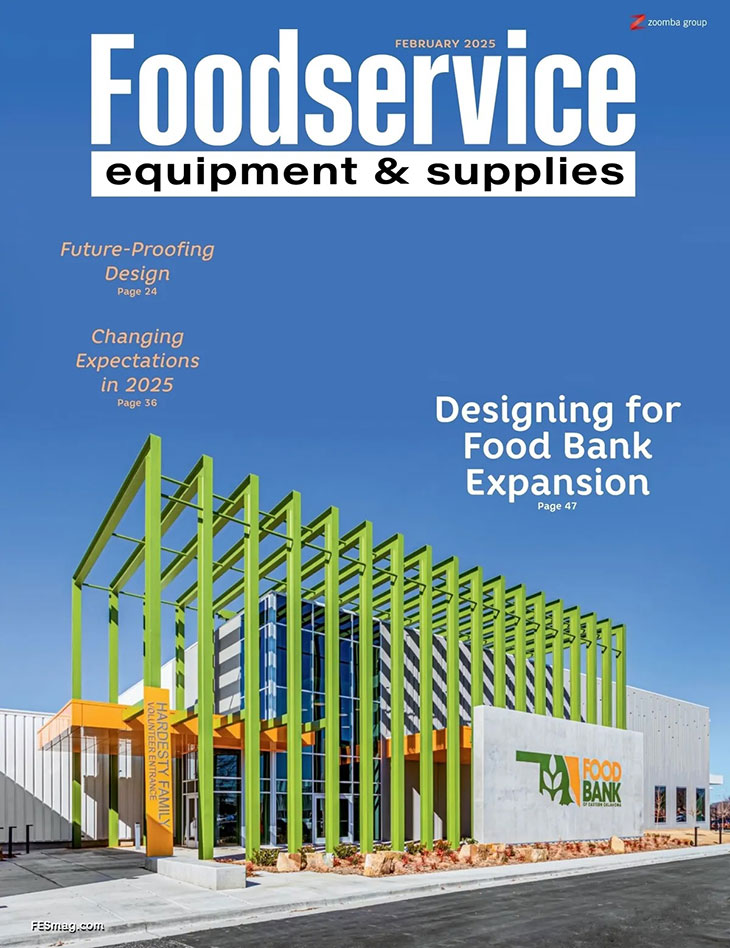If operators move into a space with a walk-in unit, it makes good economic sense for them to take advantage of it. But what if that walk-in is a cooler when a freezer is needed, or vice versa? In that situation, operators should consider changing the box to what they need.
Converting a walk-in freezer to a cooler represents the simpler of the two tasks, says Wayne Stoutner, CEO of Duffy’s – AIS, an upstate New York service agency. In most cases, the operator will simply need to change the refrigeration system — evaporator, condenser, etc. — from the existing low-temperature freezer to a medium-temperature refrigerator. Beyond that, the box should work perfectly post-conversion. This approach, he estimates, should cost just ¼ to ⅓ the price of an entirely new walk-in cooler.
Going from a walk-in cooler to a walk-in freezer is far more complicated, primarily because of freezers’ lower temperatures. Such a project starts with changing the refrigeration system to a freezer. Beyond that, a conversion may require four primary changes, all of which can add to the project’s budget.
The first, and potentially most expensive, involves the box’s floor. Many walk-in refrigerators don’t have or need an insulated floor. Walk-in freezers, though, must have one.
“Cold sinks,” says Stoutner. “If you’ve got a 10- or 20-below compartment with no insulation in the floor, the floor can become 10 below. Any moisture in the ground below that starts to freeze. Water expands and then it starts [damaging the floor.]” This phenomenon, known as frost heave, can be so severe that it causes structural damage not just to the floor, but to the entire building, he adds.
Operators that want to go from walk-in coolers to freezers must invest in an insulated floor.
In addition to the insulated floor, operators must equip converted freezers with several heated components. Start with the door frame and threshold. If these are not heated, frost will build up on the inside and outside of the unit. Eventually, the door will not close properly, costing the operator in electricity, repairs and possibly spoiled food.
Many new walk-in coolers include such a frame — simply put your hand where the gasket meets the door to find out — but older boxes do not. Fortunately, it’s relatively straightforward to retrofit a unit with a heated door frame and threshold, Stoutner says.
The same holds true for a heated port, which helps keep air pressure inside the box on par with outside the box, making the unit easy to open, Stoutner says. “You might remember from the old days when your freezer door at home seemed stuck shut. They have that problem with walk-ins as well. When you’re going from cooler to freezer, you’re going to have to add a heated pressure relief port so the door will open.”
Some walk-in coolers may already have a port, notes Stoutner. Unfortunately, these are likely not heated, so the operator will need to replace them nonetheless.
The last heated addition will go on the condensate line. Keeping this piping warm will prevent water inside from freezing and causing serious damage to the refrigeration.
Making all these changes can make the project very costly, Stoutner says. In many cases, it would be more economical to simple build an entirely new walk-in. Operators should seek out expert guidance on the cost of a conversion to determine if it’s worth the money.
“If the operator has a food equipment dealer they’re comfortable with, they should speak with a project manager. A good commercial refrigeration service provider or contractor that does walk-in work would also be able to answer your questions.” Stoutner says.




